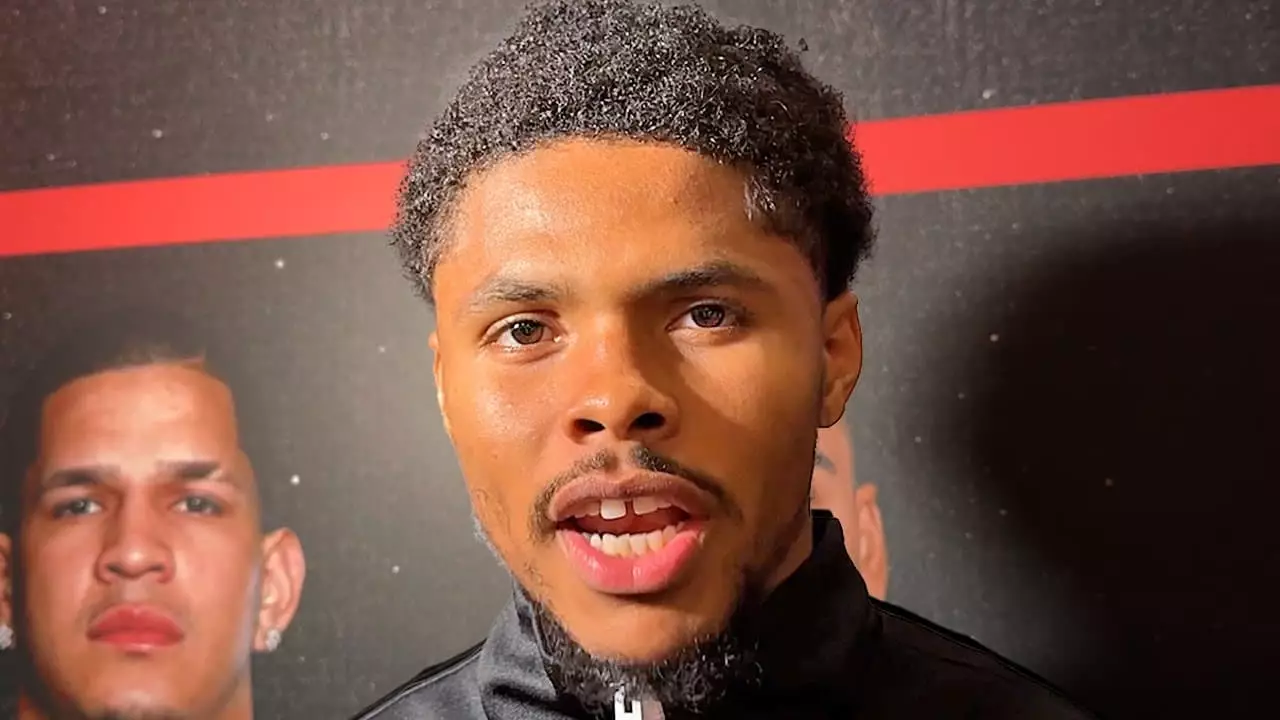Shakur Stevenson enters his upcoming bout against William Zepeda not just as a favorite but as an enigma wrapped in a carefully crafted boxing persona. Critics and fans alike often judge him through a narrow lens—viewing his movement-based, defensive style as a sign of weakness or lack of grit. This narrative, however, undermines the true resilience and strategic brilliance Stevenson embodies. His commitment to a movement-oriented approach isn’t a sign of fragility; rather, it’s a testament to his discipline and tactical intelligence.
In a sport often fueled by brute strength and raw power, Stevenson chooses a different path—a route emphasizing agility, reflexes, and psychological finesse. Critics who dismiss this style as “not tough enough” overlook the intricate layers of boxing mastery. Defensive movement isn’t about avoiding challenge; it’s about controlling the fight’s tempo, conserving energy, and setting up the perfect opportunities for scoring. Stevenson’s strategy exemplifies mastery over chaos, demanding immense concentration and technical skill, and it notably requires more mental fortitude than simply trading punches.
Countering the narrative of hype and authenticity
There’s a recurring theme among boxing fans and commentators that labels Stevenson as a “hyped” contender, especially when compared to heavyweight legends or more aggressive fighters. Many point to his comparatively cautious fights and suspect that he’s merely riding a wave of hype that might collapse under pressure. However, such judgments betray a lack of appreciation for the nuances of boxing technique. It’s easy to dismiss movement-based fighters as soft or insubstantial, but doing so ignores their adaptability and strategic depth.
Stevenson’s opponents repeatedly fail to break his rhythm—not because of weakness, but because of skillful anticipation and timely defense. Viewing his style through a simplistic “he’s just avoiding” lens diminishes the broader picture: Stevenson is a tactician implementing a counter-measure against opponents who rely heavily on volume and aggression, like Zepeda. His approach may appear controversial to those expecting a knock-out spectacle but is undeniably effective in securing wins, which demands a level of mental toughness often unseen in slugfests.
Facing the reality of punch volume and resilience
Zepeda presents a unique challenge—an incessant volume puncher who thrives on unpredictability and pressure. Stevenson’s acknowledgment that he cannot fight in the pocket as his opponents do underscores an important truth: not every fighter is built to trade fire head-on. Stevenson’s movement, while highly effective, exposes vulnerabilities, especially against fighters who can throw hundreds of punches per round. Critics quick to predict his downfall fail to recognize that resilience isn’t solely measured by taking punches but also by knowing when to adapt and survive.
Stevenson’s recent performances expose the limits of his defensive style under sustained assault. His ability to avoid damage by darting in and out is admirable, but it’s not foolproof. Against Zepeda’s relentless barrage, his stamina, reflexes, and mental focus will be tested to the maximum. This fight confronts the myth of invincibility of movement-centric fighters—they can be hurt if the volume becomes overwhelming or if they’re caught off guard. The real question isn’t whether Stevenson can slip and dance but whether he can endure and outthink an opponent whose game is designed to chip away at his defenses.
The courage to evolve without losing essence
Despite the hype and the critics’ assumptions, Stevenson remains committed to his core fighting style. His stance isn’t one born out of fear but out of confidence in his abilities. Some might argue that standing firm, engaging in toe-to-toe exchanges, or adopting a more aggressive posture would solidify his reputation. Yet, Stevenson recognizes that true greatness often lies in mastering self-awareness—knowing your strengths and limitations.
What makes Stevenson compelling isn’t just his speed or footwork; it’s his unwavering belief in his approach. His refusal to abandon his movement strategy, even when pressured by the loud voices of detractors, reveals a fighter’s integrity. He is aware that the sport is evolving, that fans crave excitement, but he isn’t willing to compromise his identity just to satisfy fleeting trends. Instead, he seeks to redefine what it means to be a champion—one who fights smart, fights resilient, and fights with both head and heart.
In a landscape flooded with fighters chasing notoriety through brawls and showmanship, Stevenson’s quiet confidence as a strategic thinker sets him apart. He understands that true power isn’t just about brute force but about control—control over oneself, the fight, and ultimately, the narrative. That’s the essence of a champion’s potential: transforming skepticism into undeniable proof of talent through perseverance, intelligence, and unwavering commitment to one’s principles.


Leave a Reply